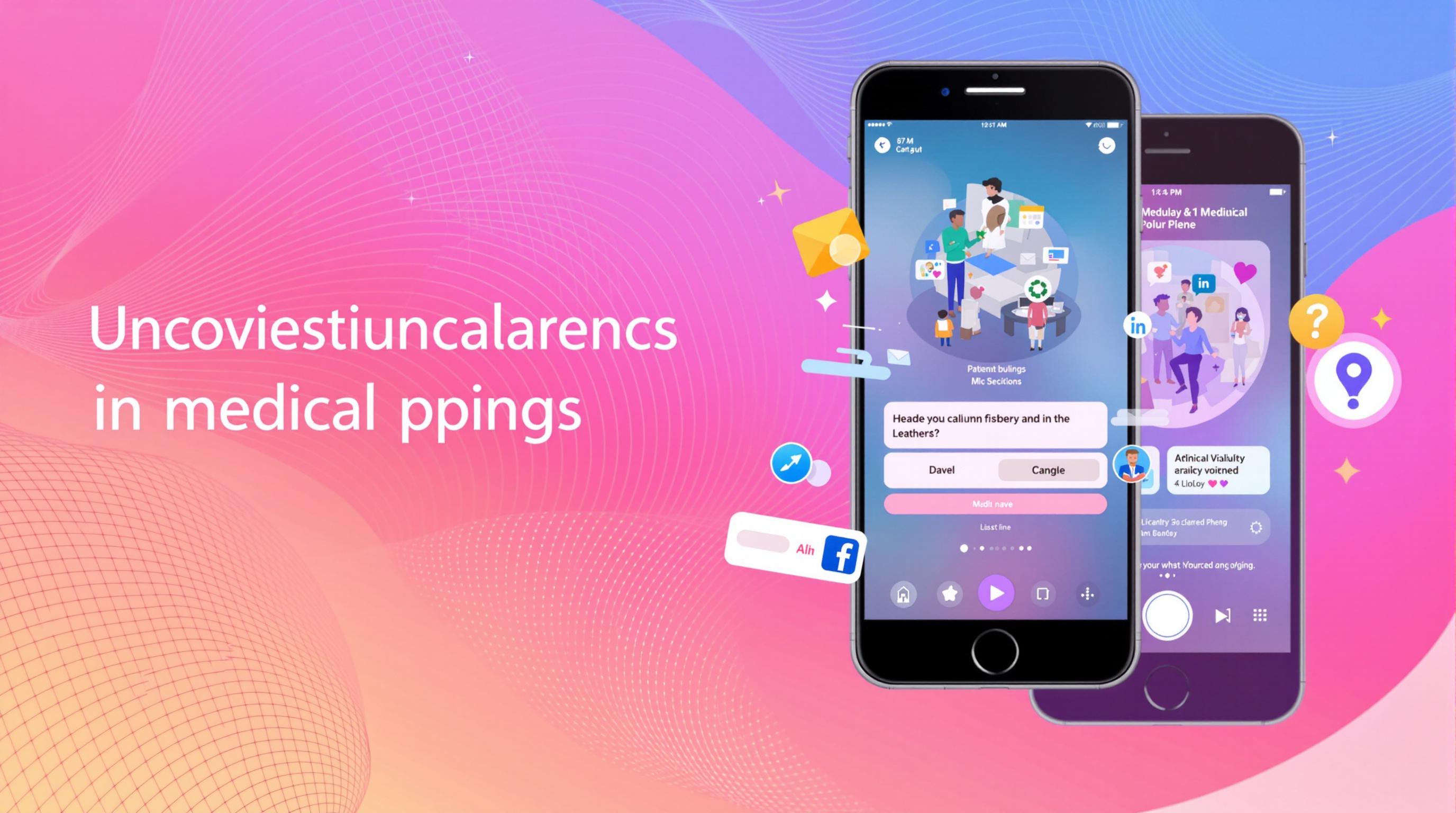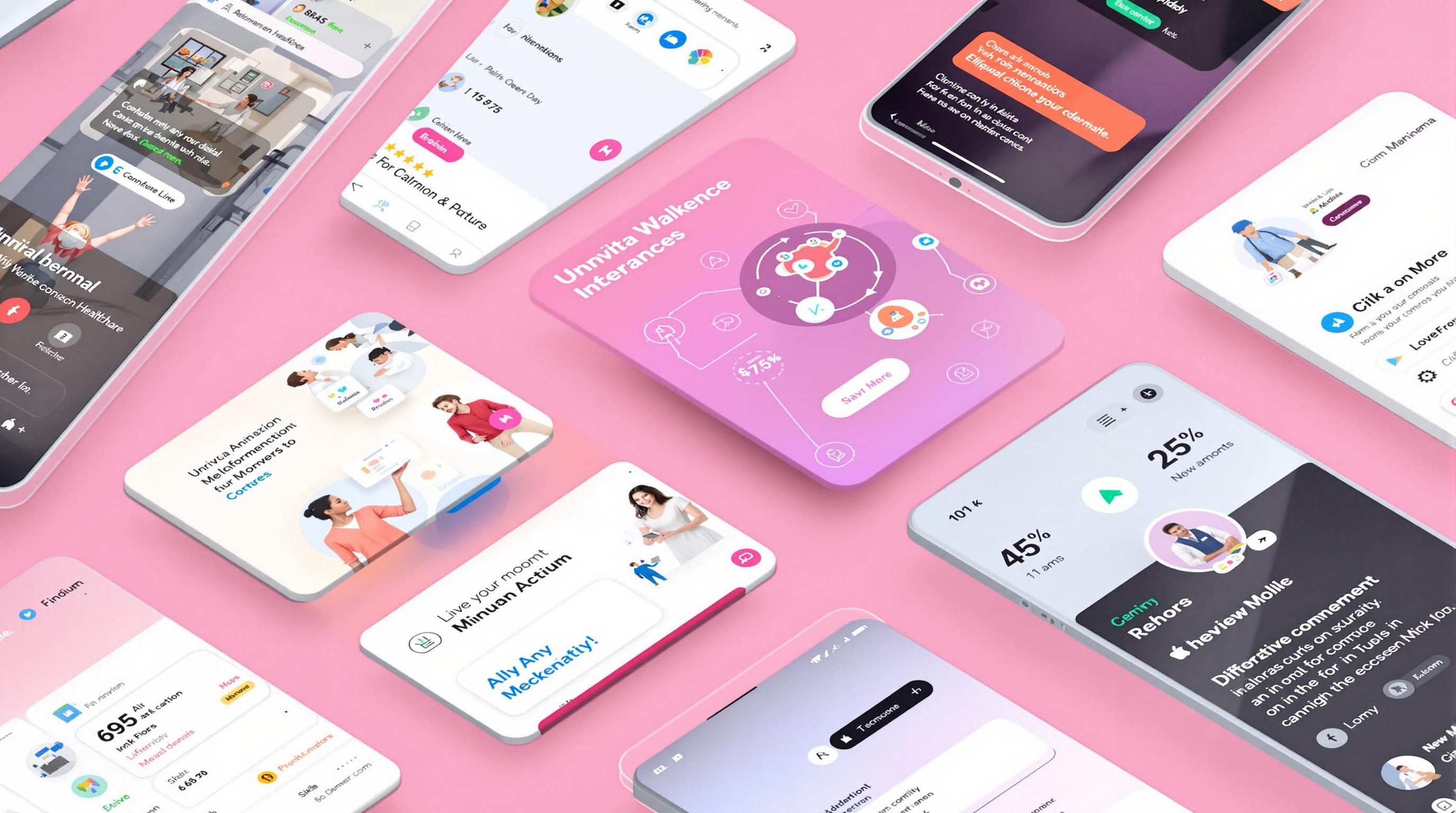Related Articles
- 7 Innovative Medical App Interfaces From the Last Five Years That Redefine User Experience in Healthcare
- Unlocking the Unseen: How Unconventional Data Sources Are Redefining Personal Wellness Tracking
- Unveiling the Silent Signals: Unexpected Links Between Sleep Patterns and Rare Immune Disorders Explored
- 7 Emerging Health Analytics Platforms Revolutionizing Predictive Care Effectiveness Since 2019
- The Untold Impact of Medical Coding Errors on Patient Outcomes and Healthcare Ethics
- 7 Game-Changing Telehealth Security Solutions Released Since 2019 You Need to Know About
5 Unconventional UI Trends in Medical Apps Enhancing Patient Engagement Beyond Traditional Interfaces
5 Unconventional UI Trends in Medical Apps Enhancing Patient Engagement Beyond Traditional Interfaces
5 Unconventional UI Trends in Medical Apps Enhancing Patient Engagement Beyond Traditional Interfaces
Introduction
In the rapidly evolving world of digital health, medical apps have become indispensable tools for patient care and engagement. While traditional user interfaces focus on straightforward data entry and retrieval, there's a growing trend towards more innovative designs that elevate patient interaction. These unconventional UI trends aim to create more intuitive, responsive, and emotionally engaging experiences, which ultimately foster better patient adherence and satisfaction.
Drawing inspiration from various fields, including gaming, psychology, and even art, medical apps are transcending standard button-clicks and forms. They incorporate immersive elements, customizable features, and personalized feedback loops to better resonate with patients' needs and preferences. This shift not only makes the apps easier to use but also builds stronger patient trust and empowerment.
In this article, we explore five unconventional UI trends that are redefining how medical apps engage patients beyond traditional interfaces. These trends demonstrate that a thoughtful blend of technology and human-centered design can revolutionize healthcare digitale experiences.
1. Gamification Elements in Patient Journeys
One unconventional trend gaining ground is the integration of gamification into medical apps. This approach turns routine health tasks into game-like challenges to boost motivation and adherence. For example, apps may award points, badges, or levels for activities like medication tracking or exercise, making the experience feel less clinical and more engaging.
By weaving game mechanics into healthcare, developers appeal to patients' natural tendencies toward play and achievement. This method helps demystify complex treatments and encourages ongoing participation in health management. Research from the Journal of Medical Internet Research supports that gamification increases user engagement and improves health outcomes (Sardi et al., 2017).
Ultimately, gamification transforms passive compliance into active involvement, creating a dynamic patient journey. When carefully designed to be both fun and purposeful, it reinforces positive behaviors, helping patients stay committed to their health goals.
2. Adaptive Interfaces Using AI
Artificial intelligence now plays a pivotal role in customizing medical app interfaces based on individual user behavior and preferences. Instead of one-size-fits-all menus, AI algorithms adapt layouts, content, and interaction styles dynamically. This personalization reduces cognitive overload and enhances usability for diverse patient populations.
For instance, an app might detect if a user prefers voice commands over touch input or if specific data are requested more frequently. It then highlights those features more prominently or simplifies navigation accordingly. This intelligent tailoring makes the app more intuitive, saving time and frustration.
As AI technology advances, adaptive interfaces will become increasingly sensitive and responsive. This evolution promises to create medical apps that truly "learn" from patients, supporting them with just the right information at the right moment, as explained in a study published by Nature Digital Medicine (Rajpurkar et al., 2020).
3. Emotional Design to Foster Empathy
Medical apps are incorporating emotional design to connect with patients on a deeper level beyond functionality. Elements such as soothing color palettes, empathetic language, and relatable avatars convey warmth and understanding, which can alleviate anxiety often associated with medical environments.
Emotional design also includes features that acknowledge patient milestones or encourage self-compassion during setbacks. This personalization fosters a supportive atmosphere, helping patients feel seen and valued. Such considerations can significantly improve engagement, especially in chronic disease management.
Experts highlight that emotional design not only enhances user experience but can positively impact health behaviors by making technology feel more human (Norman, 2004). By blending science with sentiment, medical apps break down barriers to care and brighten the patient journey.
4. Multisensory Feedback Systems
Going beyond visual cues, some medical apps now integrate multisensory feedback — involving touch, sound, and even vibration — to enrich user interaction. These cues help users better understand app responses, confirm actions, and provide reassurance in real time.
For example, haptic feedback can simulate a gentle pulse when a patient completes a task, reinforcing accomplishment non-verbally. Sound alerts that mimic natural tones—like a breath or heartbeat—offer calming signals rather than abrupt alarms. These subtle sensory experiences make the interface more engaging and supportive.
Evidence suggests multisensory design improves retention and usability for diverse users, including older adults and those with disabilities (Lepore et al., 2012). By engaging multiple senses, medical apps create more vivid and memorable interactions, elevating patient involvement.
5. Narrative and Storytelling Interfaces
Storytelling, a powerful form of human communication, is increasingly shaping medical app design. Narrative interfaces guide patients through their care pathways using stories that contextualize medical information within meaningful personal experiences. This approach transforms abstract data into relatable content.
Patients might encounter illustrated stories or interactive journey maps that depict common scenarios, challenges, and triumphs related to their condition. By connecting clinical information to lived realities, the app helps patients make sense of their health and encourages perseverance.
According to narrative medicine principles, story-driven approaches improve empathy, comprehension, and motivation (Charon, 2006). Medical apps leveraging storytelling provide not just information, but inspiration — a crucial component for sustained patient engagement.
6. Minimalist Interfaces Reducing Cognitive Load
Amidst growing app complexity, minimalist UI designs emphasize clarity and simplicity, streamlining patient interaction. By limiting visual clutter and focusing on essential information, these interfaces ease decision-making and reduce cognitive strain, especially important in stressful medical contexts.
Minimalism often involves large icons, clean typography, and straightforward navigation. Such designs prioritize accessibility for patients with varying tech literacy or those experiencing discomfort. This clear presentation of data allows users to focus on key health tasks without unnecessary distractions.
Studies suggest that minimalist medical interfaces improve efficiency and reduce errors (Winston et al., 2019). In a domain where precision is critical, simplicity enhances both safety and user confidence.
7. Augmented Reality for Interactive Education
Augmented reality (AR) is emerging as an innovative tool within medical apps to provide immersive patient education experiences. By overlaying digital information onto the real world, AR helps patients visualize anatomy, treatment procedures, or lifestyle modifications in an engaging manner.
For example, a patient could use AR to examine a 3D model of their heart, seeing how medication affects circulation directly on their own body through the device's camera. Such interactive learning aids improve comprehension and empower patients to take active roles in their health.
Research published in JMIR mHealth and uHealth highlights AR's potential to elevate patient knowledge and adherence to treatment plans (Bacca et al., 2014). This trend blends technology and storytelling to deepen understanding and emotional resonance.
8. Voice User Interfaces for Hands-Free Interaction
Voice user interfaces (VUIs) are becoming increasingly prevalent in medical apps, enabling patients to interact hands-free through natural language commands. This accessibility option benefits users with mobility challenges or those needing convenient, quick access without relying on traditional touchscreens.
With advances in speech recognition and natural language processing, VUIs offer intuitive, conversational exchanges that feel more personal and less technical. Patients can check symptoms, schedule appointments, or receive medication reminders simply by speaking.
Implementing voice controls helps bridge gaps for elderly or visually impaired users, expanding inclusivity (Porcheron et al., 2018). This natural mode of interaction enhances ease and immediacy, contributing to sustained engagement.
9. Social Interaction Features for Peer Support
Integrating social elements into medical apps presents an unconventional way to increase patient engagement by fostering peer support networks. These features connect users with others facing similar health challenges, enabling shared experiences, advice, and encouragement.
Community forums, direct messaging, or group challenges create a sense of belonging and accountability that motivates patients to adhere to treatments or maintain lifestyle changes. This collective interaction complements clinical care with emotional and social support.
Studies underscore social support’s role in better health outcomes (Gallant, 2003). Medical apps leveraging this trend transform isolated self-management into communal journeys, enriching the patient experience.
10. Data Visualization with Real-Time Insights
Finally, innovative data visualization techniques help medical apps communicate complex health information in clear, actionable formats. Real-time interactive charts, graphs, or infographics allow patients to track progress, identify trends, and make informed decisions.
Dynamic visuals engage users by translating raw data into meaningful stories about their health, such as blood glucose fluctuations or sleep quality patterns. This immediate feedback supports self-awareness and timely behavioral adjustments.
Effective visualization reduces confusion and enhances patient empowerment, as supported by research in the field of health informatics (Lee et al., 2018). Providing transparency and clarity, this UI trend nurtures a proactive approach to personal health management.

